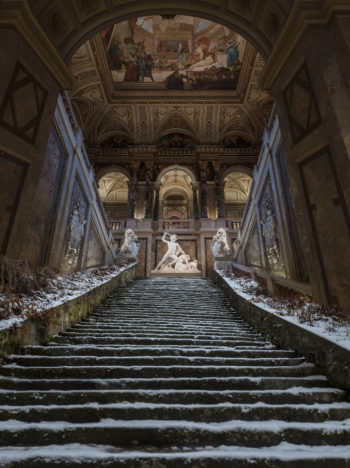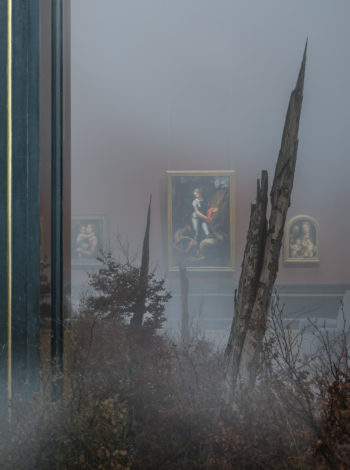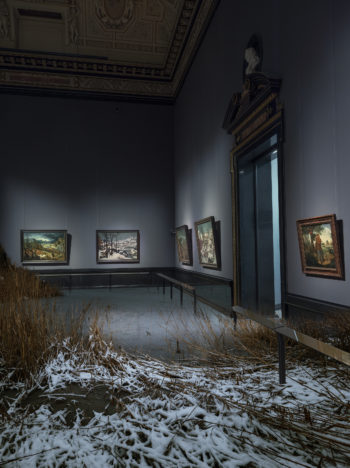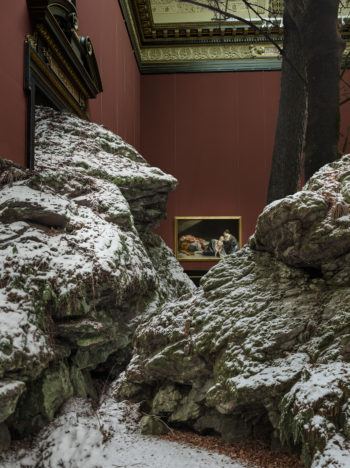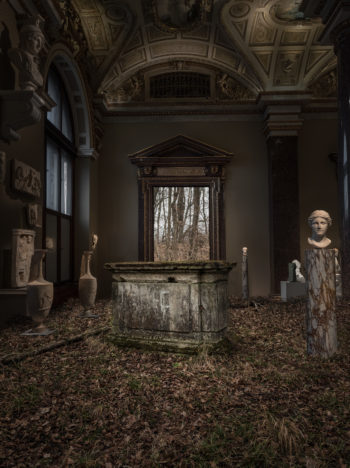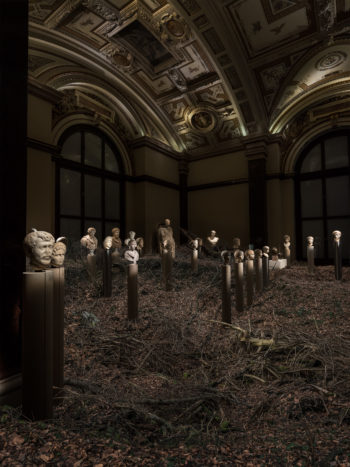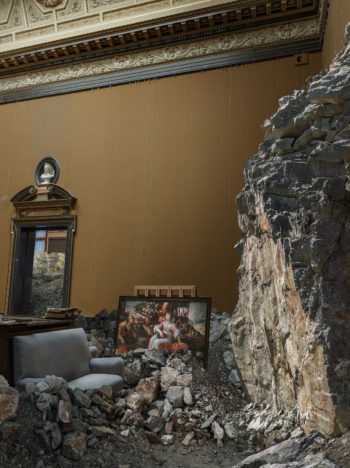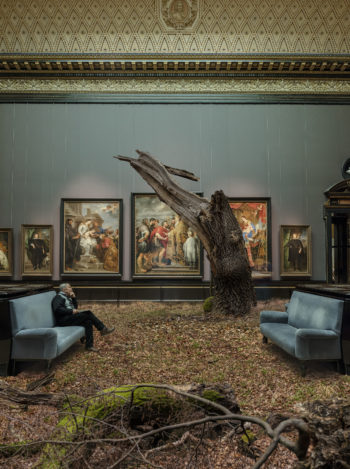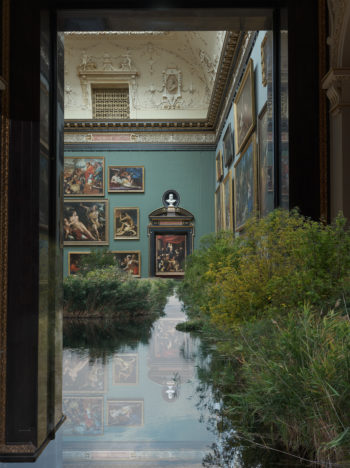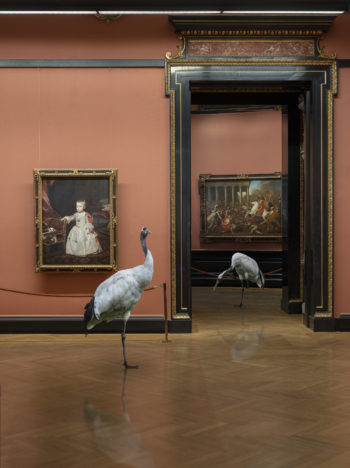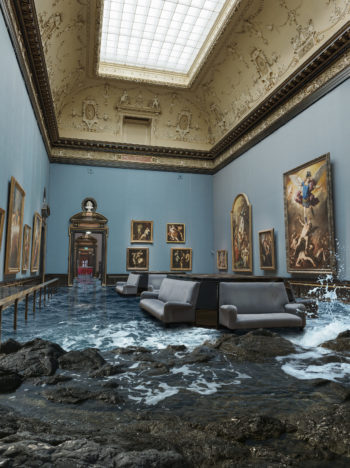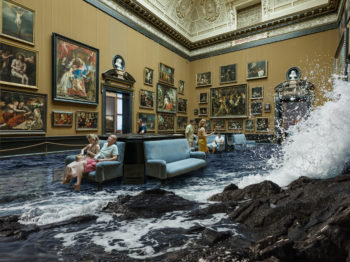-
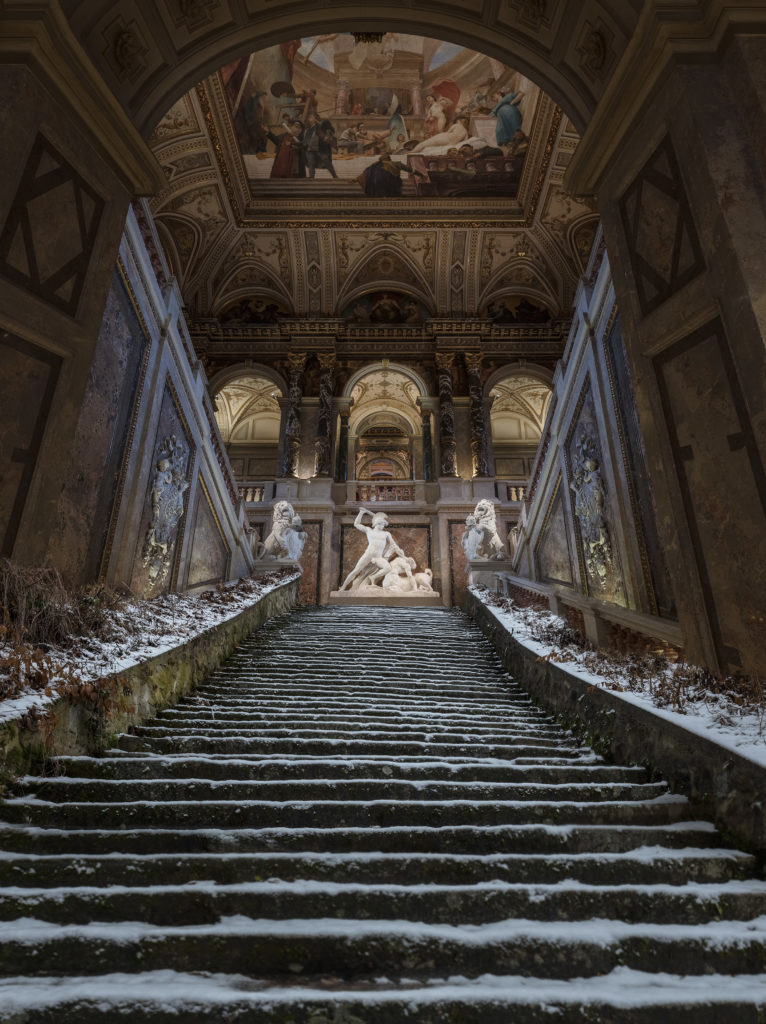
The Last Day
C-Print auf Aluminium 135 x 100cm, 2018 Auflage: 41/12 -
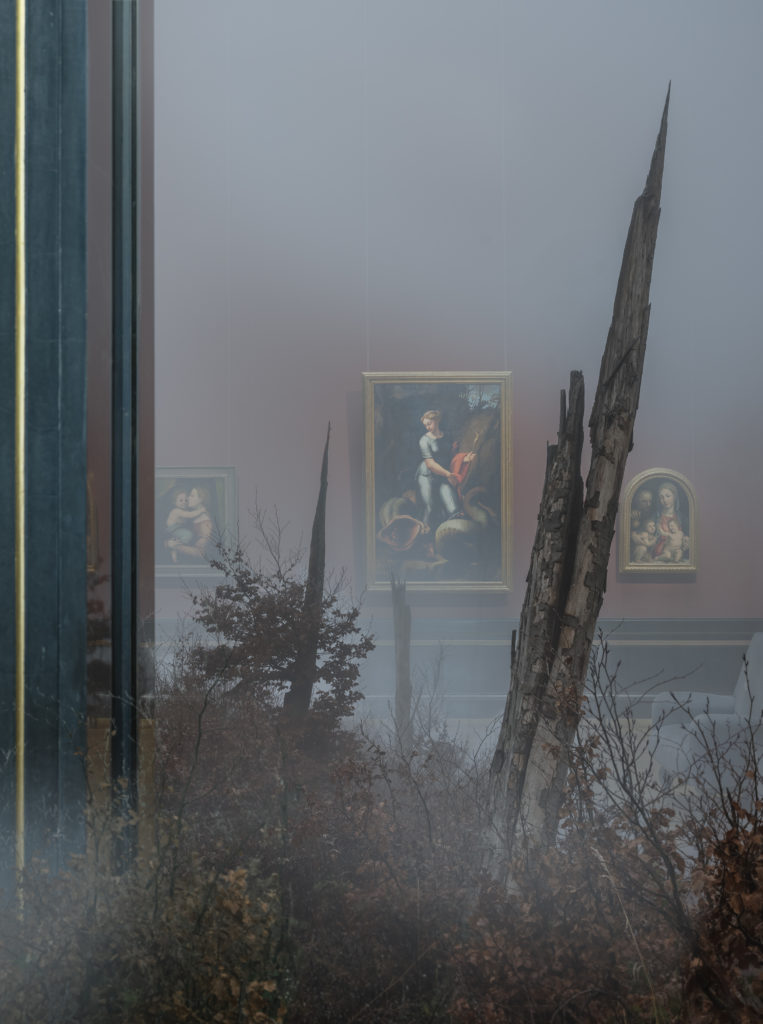
The Last Day
C-Print auf Aluminium 135 x 100cm, 2018 Auflage: 42/12 -
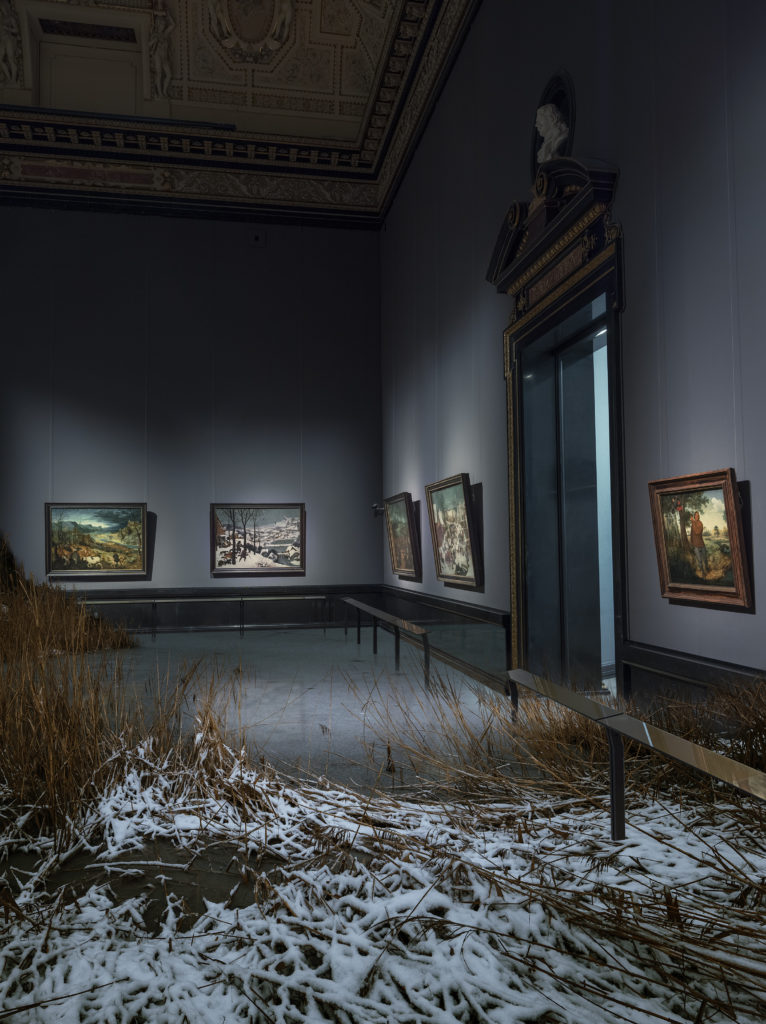
The Last Day
C-Print auf Aluminium 135 x 100cm, 2018 Auflage: 43/12 -
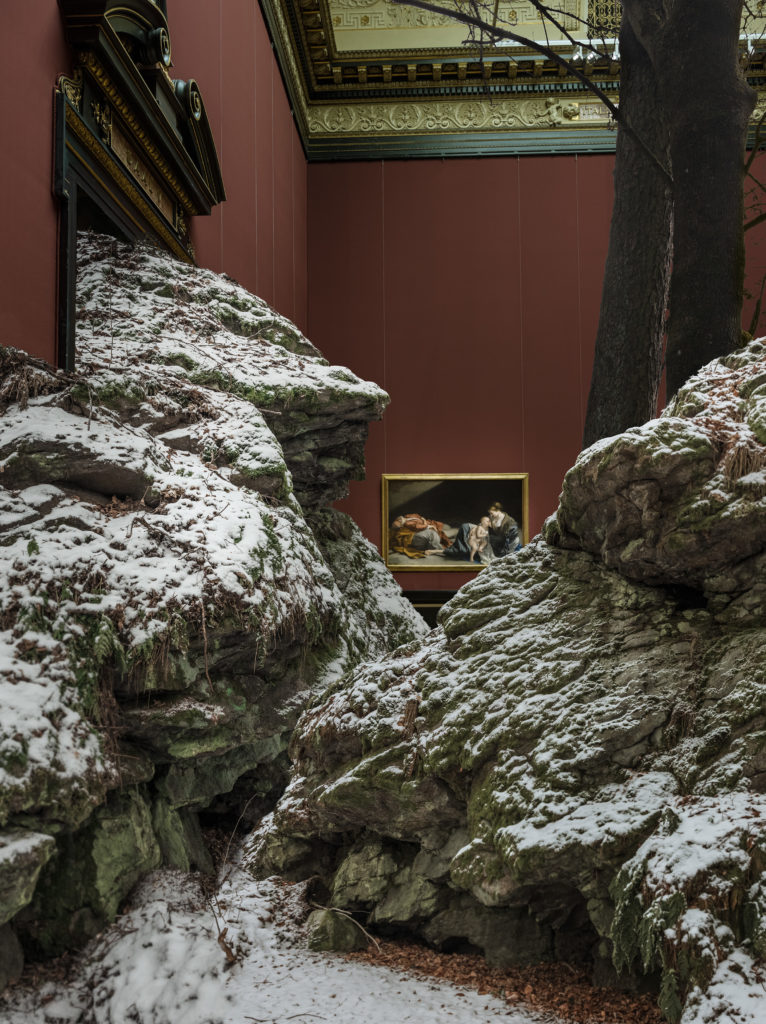
The Last Day
C-Print auf Aluminium 135 x 100cm, 2018 Auflage: 44/12 -
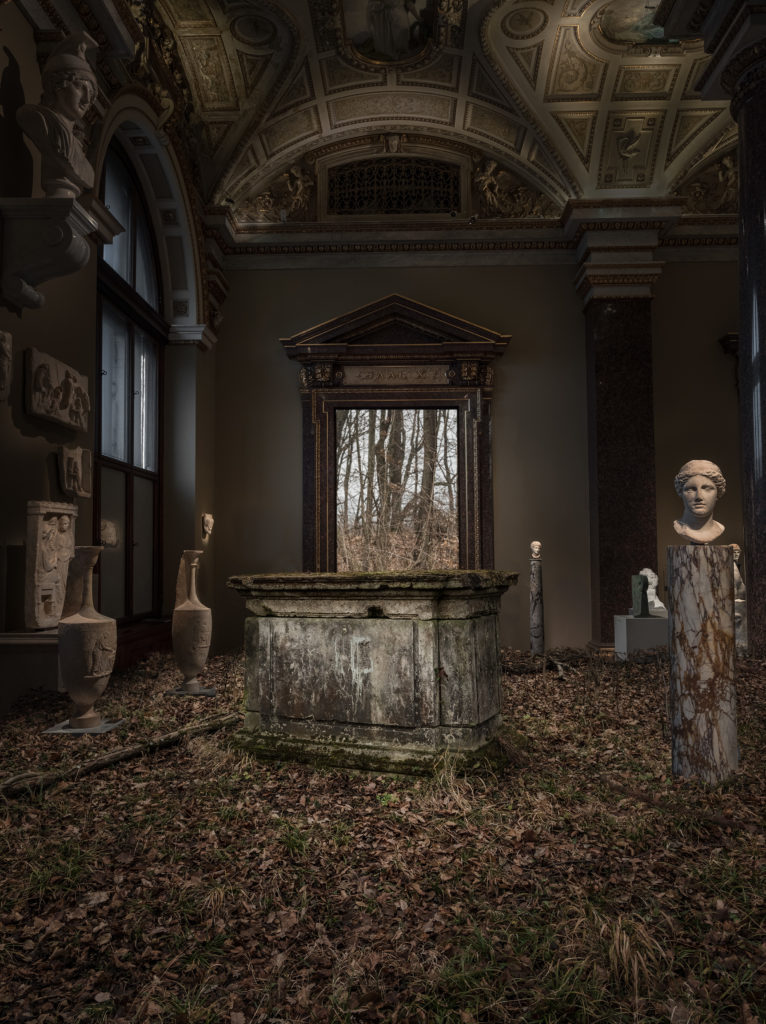
The Last Day
C-Print auf Aluminium 135 x 100cm, 2018 Auflage: 45/12 -
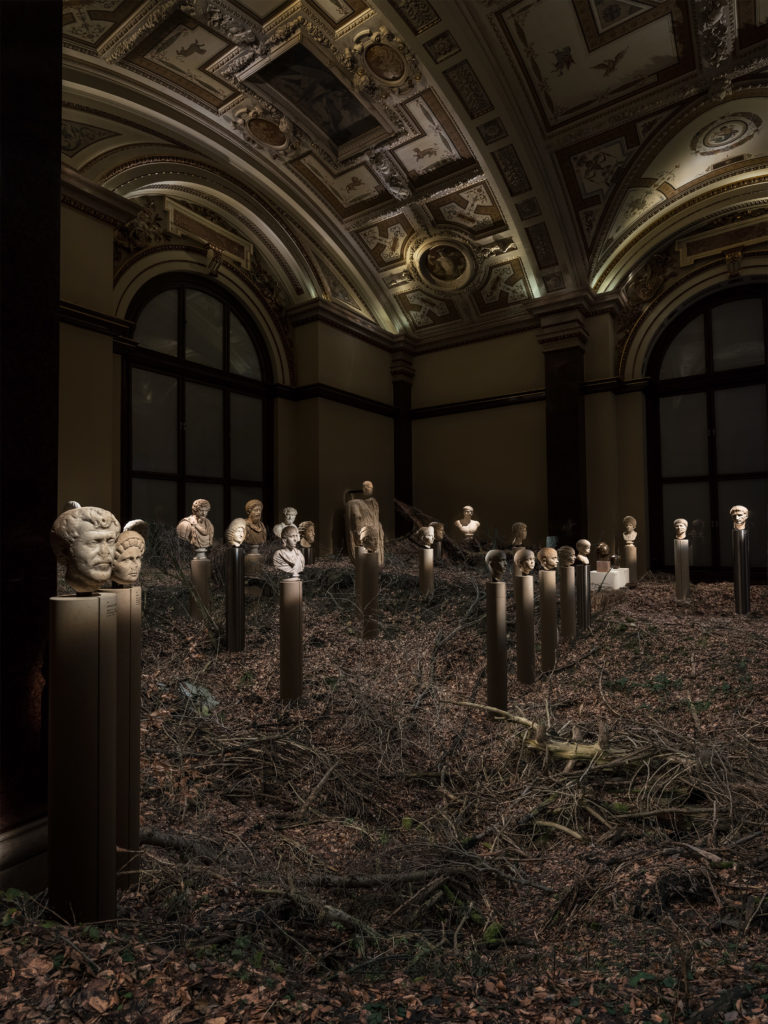
The Last Day
C-Print auf Aluminium 135 x 100cm, 2018 Auflage: 46/12 -
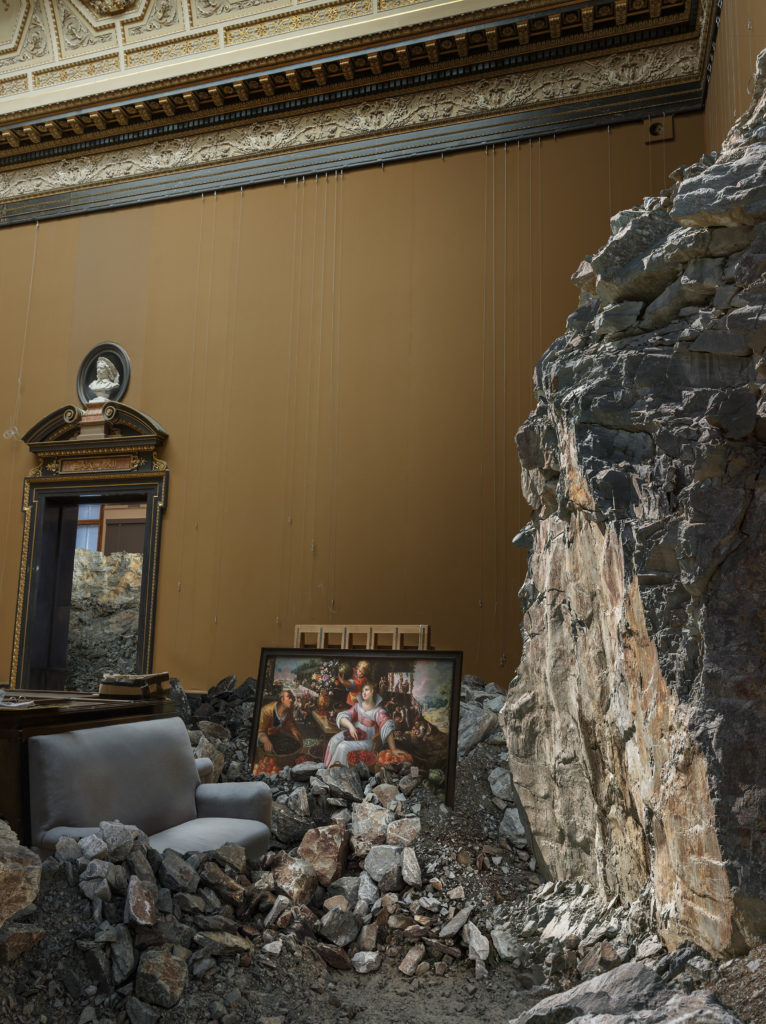
The Last Day
7/12 -
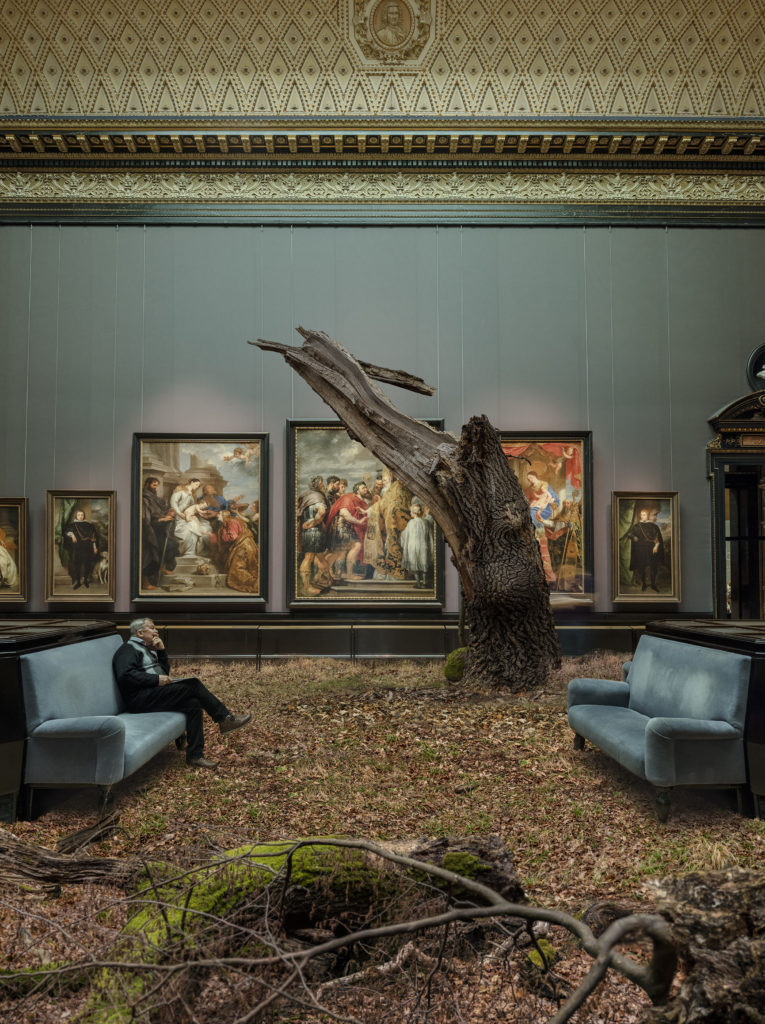
The Last Day
C-Print auf Aluminium 135 x 100cm, 2018 Auflage: 48/12 -
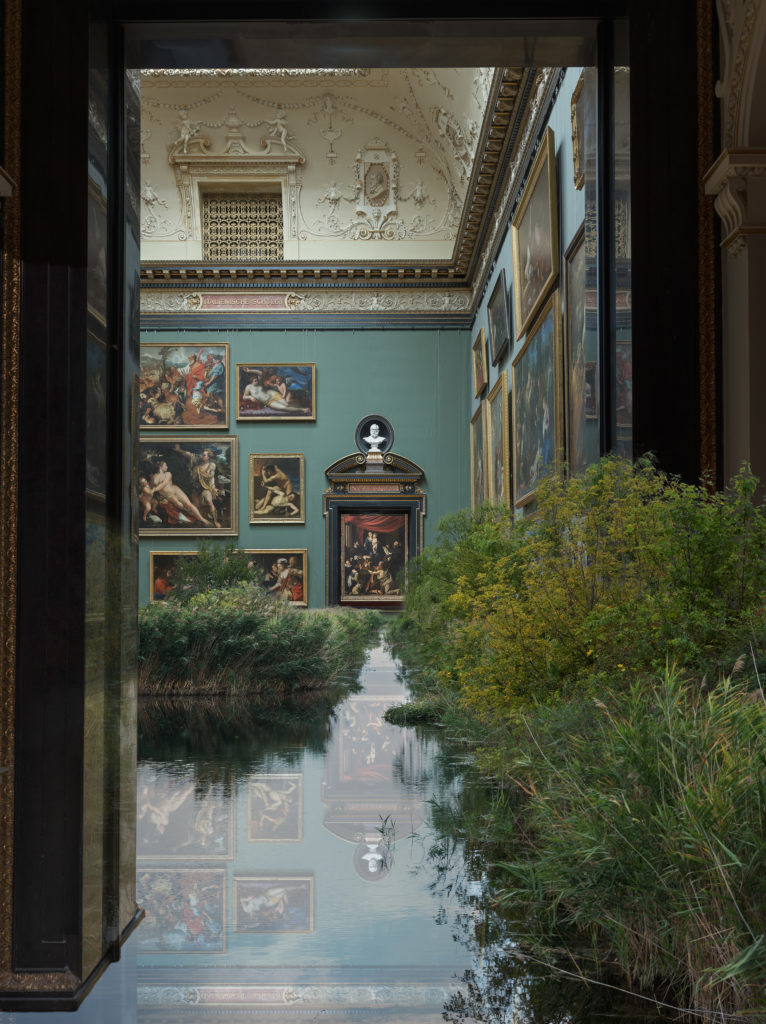
The Last Day
C-Print auf Aluminium 135 x 100cm, 2018 Auflage: 49/12 -
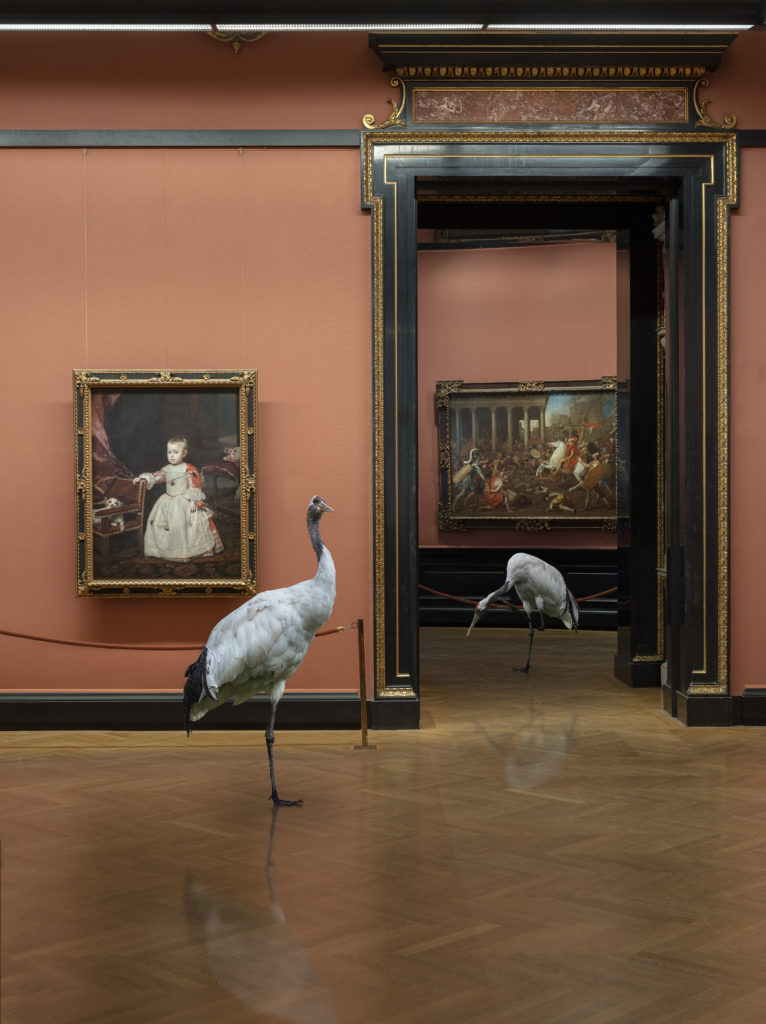
The Last Day
C-Print auf Aluminium 135 x 100cm, 2018 Auflage: 410/12 -
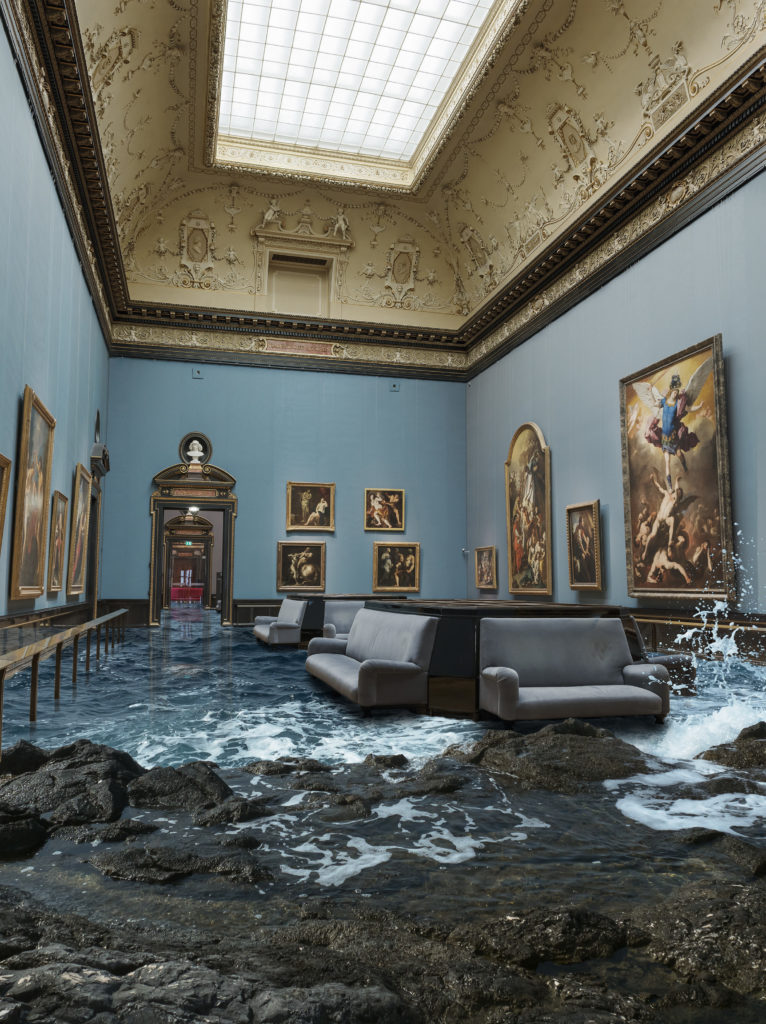
The Last Day
C-Print auf Aluminium 135 x 100cm, 2018 Auflage: 411/12 -
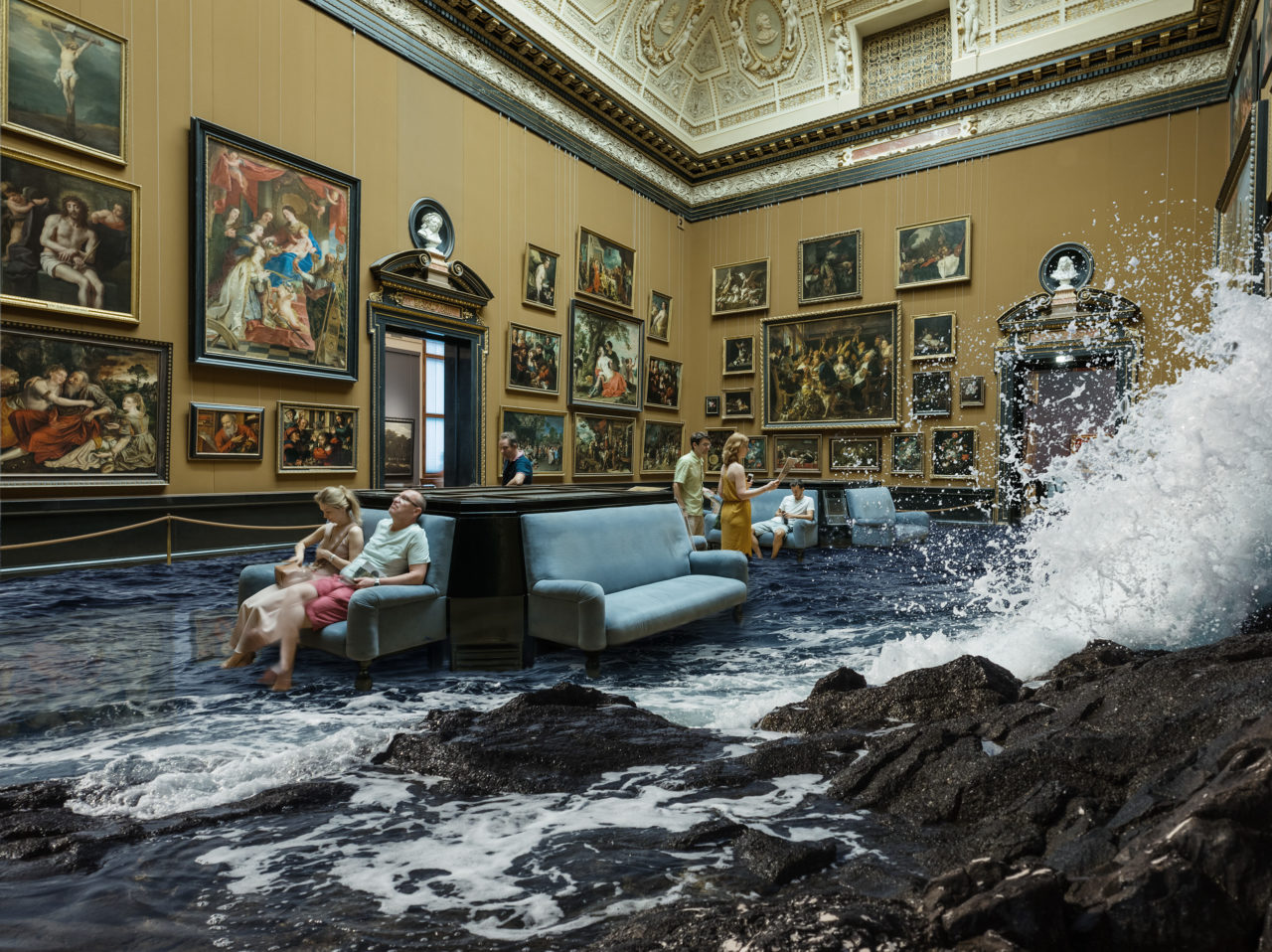
The Last Day
C-Print auf Aluminium 125 x 169cm, 2018 Auflage: 412/12
THE LAST DAY
12 fotografische Tableaus
Ausstellung im Kunsthistorischen Museum Wien, März 2018 bis September 2019
Im Rahmen von ‚Ganymed Nature’, einem Projekt von Jacqueline Kornmüller und Peter Wolf im Kunsthistorischen Museum Wien, entstanden zwölf fotografische Tableaus. Natur dringt in die Räume des Kunsthistorischen Museums ein. Im Laufe der Beschäftigung mit den Natursegmenten, die ich einarbeiten wollte, ist der Naturraum immer mehr zum Kultur- und Geschichtsraum geworden. Der Mensch hat sich unwiderruflich in die Natur eingeschrieben.
Die oberflächlich sichtbaren Landschaften sind Zeugen und Bewahrer geschichtlicher Ereignisse. In der Annahme, dass Natur Geschehenes allmählich zum Verschwinden bringe, wird diese auch zum politischen Motiv. Die Schichten des Bodens enthalten den Abdruck frühzeitlicher Ansiedelungen, aber auch den von Eroberungen, von kriegerischen Auseinandersetzungen bis hin zu politisch und religiös motivierten Massakern. Diese Landschaftsfragmente, als mögliche Träger der vom Menschen gemachten Geschichte, dringen in die Räume des Kunsthistorischen Museums ein. Es entsteht ein visueller Dialog zwischen den beiden Ebenen. Ohne dass geschichtliche Ereignisse genau benannt würden, sollen sich in den Betrachter*innen Gedankenbilder ereignen. So kann zum Beispiel das Meer einerseits mit seinem naturkatastrophenartigen Aufbäumen infolge eines sich vollziehenden Klimawandels und andererseits als Fluchtweg tausender Ertrunkener, die auf der Suche nach einem friedlichen Leben waren, nicht mehr so betrachtet werden wie vor einigen Jahrzehnten. Andere innere Bilder können durch das Aufeinandertreffen mit Gemälden oder Skulpturen und deren historischen Inhalten entstehen. Dargestellte Mythen etwa als Sinnbild für die Überwindung der animalischen Natur durch die menschliche Vernunft. In den fotografischen Tableaus von THE LAST DAY spüre ich diesen Gedanken nach. Orte von tief unter der Erde liegenden frühesten Besiedelungen, teilweise noch sichtbare Spuren des Holocaust, aber auch idyllische Landschaften – alle sind sie Zeugen vergessener Geschehnisse. In diesem visuellen Feld der Durchdringung gegensätzlicher Abbilder von Kulturen mögen sich für die Betrachter*innen Gedankenräume öffnen, denen Gewalt und Wut, Erinnerung und Anklage genauso innewohnen, wie Innehalten und Versöhnung.
Natur als Kultur- und Geschichtsraum.
THE LAST DAY
12 photographic tableaus
Exhibition at the Kunsthistorisches Museum Vienna, 2018/19
A few years ago, I toyed with the idea of introducing ’nature‘ through photography into the rooms of the Kunsthistorisches Museum. The idea was then revived inspired by the Ganymed Nature‘ project by Jacqueline Kornmüller with the first topics depicting the penetration of the sea into two museum rooms. My main aim during the creative and technical development was to generate an impression of the imaginable, depicting how it could be, with the illusionary character of the montage receding into the background.
While working with the aspects of nature which I sought to incorporate, the natural space morphed more and more into a cultural and historical space. In summary, it could be argued that mankind has irrevocably carved itself in nature.
The landscapes, visible on the surfaces, serve as witnesses and preservers of historical events. Assuming that nature causes events to vanish over time, it also becomes a political motif. We find early settlements, but also conquests, military conflicts and even politically and religiously motivated massacres engraved in the layers of the soil. These landscape fragments, with the potential presence of historical events, invade the spaces of the Kunsthistorische Museum Vienna – thus creating a visual dialogue between the two levels. Mental images of thoughts are expected to surface in the viewers without openly identifying the historical event. For example, based on two recent global developments, the sea can no longer be interpreted in the same way as a few decades ago. These are firstly the sea’s natural disaster-like upheavals resulting from an expected and already occurring climate change, and secondly the sea serving as an escape route for thousands of drowned people in search of a peaceful life. Other inner images may arise from encounters with paintings or sculptures and their historical contents. Portrayed myths, for example, may symbolize the overcoming of animal nature by human reason.
I track these thoughts in the photographic tableaus of THE LAST DAY. Deep underground places of earliest settlements, partly visible traces of the Holocaust, landscapes alongside the death marches to the former concentration camp Mauthausen just before the end of the war, but also picturesque landscapes – all witnesses to forgotten events. In this visual encounter of opposing images of cultures, thought spaces may open for the viewer, in which violence and anger, memory and accusation may coincide with reflection and reconciliation.
Nature as a cultural and historical space.
